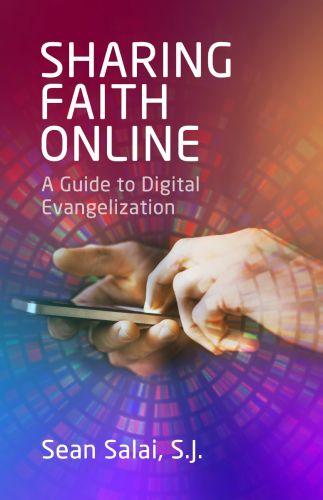
Sharing Faith Online

About the book
This handbook narrates the ongoing media efforts of Christians--from the 1960s to the twenty-first century--to communicate the gospel in the modern age and draws powerfully from the story of how one group of seventy-four people sought spiritual growth via an interactive digital Ignatian retreat on Facebook. Written by a Jesuit priest with years of experience in journalism as well as spiritual formation, the book draws lessons from these stories to present a “how-to” guide for individuals and groups seeking more effective ways to share faith on social media.
Endorsements
Sean Salai, SJ, has taken on two looming tasks for the Church: the generational issues in religious practice and the potential of social media to accomplish part of what the Church needs to accomplish today. He led a large group of people through the Spiritual Exercises of St. Ignatius; he did so with a particular focus on contemporary needs.From his study of the participants who persevered through the experience and gave concrete feedback, Salai offers some concrete directions for outreach over social media for believers today.
In Sharing the Faith Online, Sean Salai has provided an invaluable resource to those seeking to share the Good News of Jesus Christ. The digital revolution caught the Church off-guard. The pandemic further heightened the unexpected need for the Church to have a digital presence. Now, in this easy-to-read volume, we have a field manual on how the Church can get ahead of the curve and have a robust - rather than merely reactionary - digital presence and plan for evangelization online.
As a lawyer and as an educator, I know that the means of communication often is vitally important to the successful conveyance of ideas. In 'Sharing the Faith Online,' Sean Salai, SJ, shows how to use new messaging to present eternal truths effectively. It is an important book
Online spirituality is an urgent topic in the wake of the pandemic and amid the decline of institutional religion in America. Salai’s unique combination of ecclesial and journalistic background qualifies him to address intelligently.
Sean Salai, S.J., brilliantly retains the reader’s attention as he sets out possibilities for social media in sharing Christian faith online. His proposals for digital evangelization are rooted in the encounter with Jesus Christ made possible by the Spiritual Exercises of St Ignatius Loyola. A fascinating and valuable book.
Some decades ago, Walter Ong alerted us to how communicational technology paradoxically involves external, distancing apparatus even as it facilitates the greater sharing of individuals' interiority. This was true of the invention of writing and it is also true of our internet connections. If people can fall in love via the internet, can faith communities not arise and be sustained through the same mechanism? Sean Salai has given us a carefully organized, experience-based study that opens upon this arena. His work is a doorway to what is sure to be an increasingly important avenue of evangelization and Church life.
Today, both preaching and scholarship depend on our use of digital media, as well as on more traditional ways of communicating ideas, to get their message across. Does this change in the tools we use bring about changes in the content or style of the message itself? Sean Salai's new book on the implications for faith and prayer that he discovered in directing the Spiritual Exercises of St. Ignatius on Facebook leads us to a whole new realm of understanding the implications of digital media for evangelization—asign of the coming of a new age in the communication of God's transforming Word
The internet offers unprecedented opportunities to spread both truth and utter nonsense, the gospel and rumors only a fool would believe. Sean Salai gives us a useful guide to navigating and deploying the tools of the New Media for the purposes of Christ while defusing the evils that poison on-line discourse. Bravo!
Sean Salai reminds us that everyone has a pulpit in their pocket, as close as their cell phone. We need to find ways to make that device shed light — not just heat. His important and penetrating analysis is a welcome look at what the Church needs to do to make that happen and, just maybe, win over a new generation of believers.










